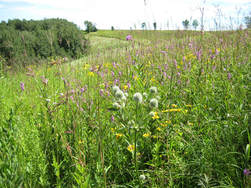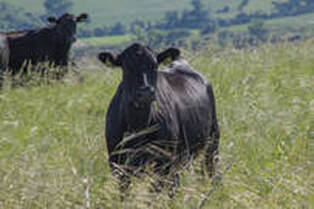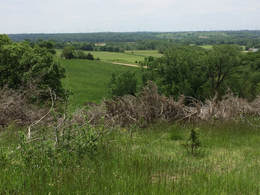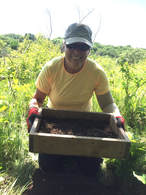Landowners
Private landowners in the Little Sioux watershed play a major role in conserving this landscape. Through the years, this area has been targeted by special programs in an effort to preserve and restore rare and declining habitats. Land management and prairie restoration practices include, but are not limited to, invasive species removal (both woody and herbaceous), fencing, prescribed fire, seeding, timber stand improvement and deferred grazing. Cost share dollars and conservation professionals aid landowners in implementation of practices.
Prairie Restoration and ProtectionIn 2005, Iowa DNR selected the watershed as a priority area for the Landowner Incentive Program (LIP). Other private lands incentive programs such as USFWS Private Stewardship Program and the USDA-NRCS Wildlife Habitat Incentive Program (WHIP) followed this lead by also targeting these rare and declining habitats. From 2005 through 2010, nearly $500,000 of cost share funding was invested in land management and prairie restoration practices. This $500,000 does not reflect staff time, partner contributions or landowner match funds. In all, targeting cost share dollars to the Little Sioux over the 5 years measured resulted in the restoration of over 3,700 acres of rare and declining habitats. Although restoration has slowed some due to reductions in funding, management and preservation continue in the watershed.
Restoration of these lands also resulted in increased demand for assistance with long term management. As a result, a private lands burn crew was formed, and burns were conducted through a cooperative effort by staff from local volunteer fire departments, CCBs, DNR, and landowners. Staff and budget cuts forced this burn crew into hiatus – but it remains an example of necessary public and private cooperative management of native habitat. Several County Conservation Boards have a supply of prescribed fire equipment for use by private landowners. Please contact your local CCB for information. |
GrazingThe prairie pastures of the Little Sioux Watershed have been home to cattle for over 150 years. Historically, these pastures contained both native cool and warm season grasses and forbs (broadleaf plants). Although these pastures have decreased in number, size, and forage quality, there is still a culture of grazing the steep, gravelly side slopes and stream bottoms. Little Sioux Grazing Network The Little Sioux Grazing Network is open to producers and landowners in the watershed who are interested in the ins and outs of animal grazing on the grasslands of the Little Sioux Valley. This group explores sustainable grazing practices that are both economically and ecologically beneficial. Contact Amy Crouch at [email protected] for more information or to become a member. Click here for a fact sheet on sustainable grazing. |
Invasive Species RemovalThere are many non-native invasive species and native nuisance species that can easily take over native prairies and reduce pasture forage for livestock.
Not sure if a plant is invasive? The Iowa DNR has a short list of invasive species here. Invasive.org is another good resource. Check out this brochure for plant alternatives if you'd like to replace invasive species in your yard or landscaping. Management advice and financial assistance is available to help with invasive species removal on your property via the following:
Check out this UNL study on Eastern red cedar management: Evaluating the Cost of Reactive Versus Proactive Eastern Redcedar Management Click here for more information on controlling Eastern red cedars in Iowa. |
Archaeology Site PreservationOwning an archaeological site along the Little Sioux River is a special honor that comes with its own responsibilities. Below, you can download recommendations for preserving archaeological sites on your property.
| ||



